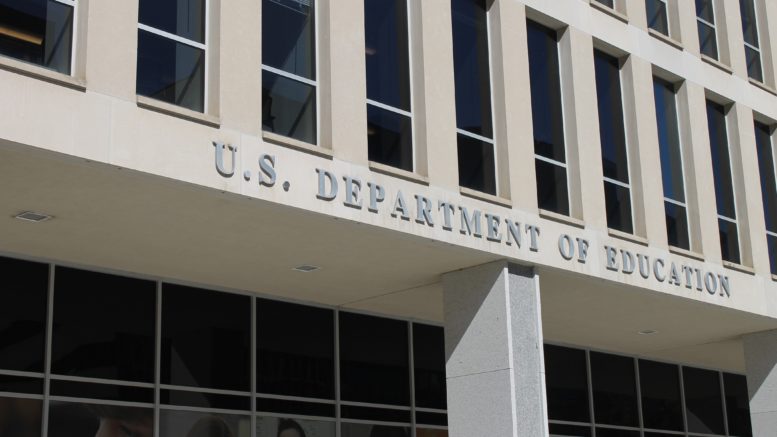The Trump administration is proposing to merge the federal departments of Labor and Education, a move that would require congressional approval.
President Donald Trump on Thursday announced the plan, which the Office of Management and Budget has worked on over the past year after it was directed to develop a comprehensive plan to reorganize the executive branch, focusing on ways to merge overlapping, duplicative offices and programs and eliminate those the administration saw as unnecessary.
Merging the departments into a single Cabinet agency would “better meet the needs of American workers and students,” according to a factsheet on the plan from the White House, which added that job seekers have to navigate more than 40 workforce development programs across 15 federal agencies.
“This fragmentation perpetuates unnecessary bureaucracy and complicates state and local efforts to weave together disparate funding streams to meet the comprehensive needs of their citizens,” according to the plan.
Four new sub-agencies
The proposal would create four main sub-agencies focused on K-12, higher education/workforce development, enforcement and research/evaluation/administration.
“This would help create alignment throughout the education-to-career pipeline, while also creating coherence within the workforce development and higher education worlds,” the plan said.
The higher education/workforce agency would be named the American Workforce and Higher Education Administration (AWHEA) and include current Labor Department workforce development programs and Education Department (ED) vocational education, rehabilitation and higher education programs. AWHEA would be structured to include components focused on: higher education; disability employment; adult workforce development; youth workforce development; and veterans employment. Each one would be headed by a presidentially appointed official.
AWHEA also would maintain a federally administered Apprenticeship and Impact Fund, which would consolidate various grant programs into a single fund focused on testing and replicating effective apprenticeship, workforce development and postsecondary education models.
Already partnering
The two departments have worked closely over the past few years on various programs, such as the Trade Adjustment Assistance Community College and Career Training grant program, which was a $1.9 billion investment to help community colleges address workforce challenges. The departments have also teamed to more closely coordinate on training through the 2014 Workforce Innovation and Opportunity Act. More recently, the secretaries of both departments served as co-chairs on the president’s Task Force on Apprenticeship Expansion, which last month submitted its report with recommendations to the White House.
The Education Department (ED) has the fewest employees of a Cabinet agency with just under 4,000, and a $68 billion budget. It oversees federal student grants and loans, distributes K-12 education funding and enforces federal civil rights laws at public schools and colleges. The Labor Department, with about 15,000 employees and a $13 billion budget, has a broad portfolio that includes programs to train workers, enforcement of minimum-wage laws, the Bureau of Labor Statistics — which produces economic data — and the Occupational Safety and Health Administration.
The last major cabinet-level change shuffle occurred some 40 years ago when the Department of Health, Education and Welfare split into the Department of Education and Department of Health and Human Services.
Congressional OK needed
Although Republicans have for some time wanted to eliminate ED, the idea hasn’t gained much momentum, and the new plan faces an uphill political battle. Still, some key House Republicans have said they welcome the idea.
“The federal government is long overdue for a serious overhaul,” Rep. Virginia Foxx (R-North Carolina), chair of the House Education and the Workforce Committee, said in a statement. “The proposed Department of Education and the Workforce is recognition of the clear relationship between education policy at every level and the needs of the growing American workforce.”
Even before the plan was announced, it was met with skepticism among some lawmakers and labor unions. Sen. Patty Murray (D-Washington), the ranking member of the Health, Education, Labor and Pensions Committee, said members of both parties in Congress had pushed back against Trump’s proposals “to drastically gut investments in education, health care and workers — and he should expect the same result for this latest attempt to make government work worse for the people it serves.”
Randi Weingarten, president of the American Federation of Teachers, a union representing 1.7 million teachers and education professionals, said under normal circumstances combining the education and labor departments might make sense as a way of bringing together education and workforce development programs.
“But there is nothing normal about this administration, so we’re extremely skeptical of the motivations here given how hostile (Education Secretary) Betsy DeVos and President Trump have been to public education, workers and unions,” Weingarten said.
Associated Press reports were used in this article.

